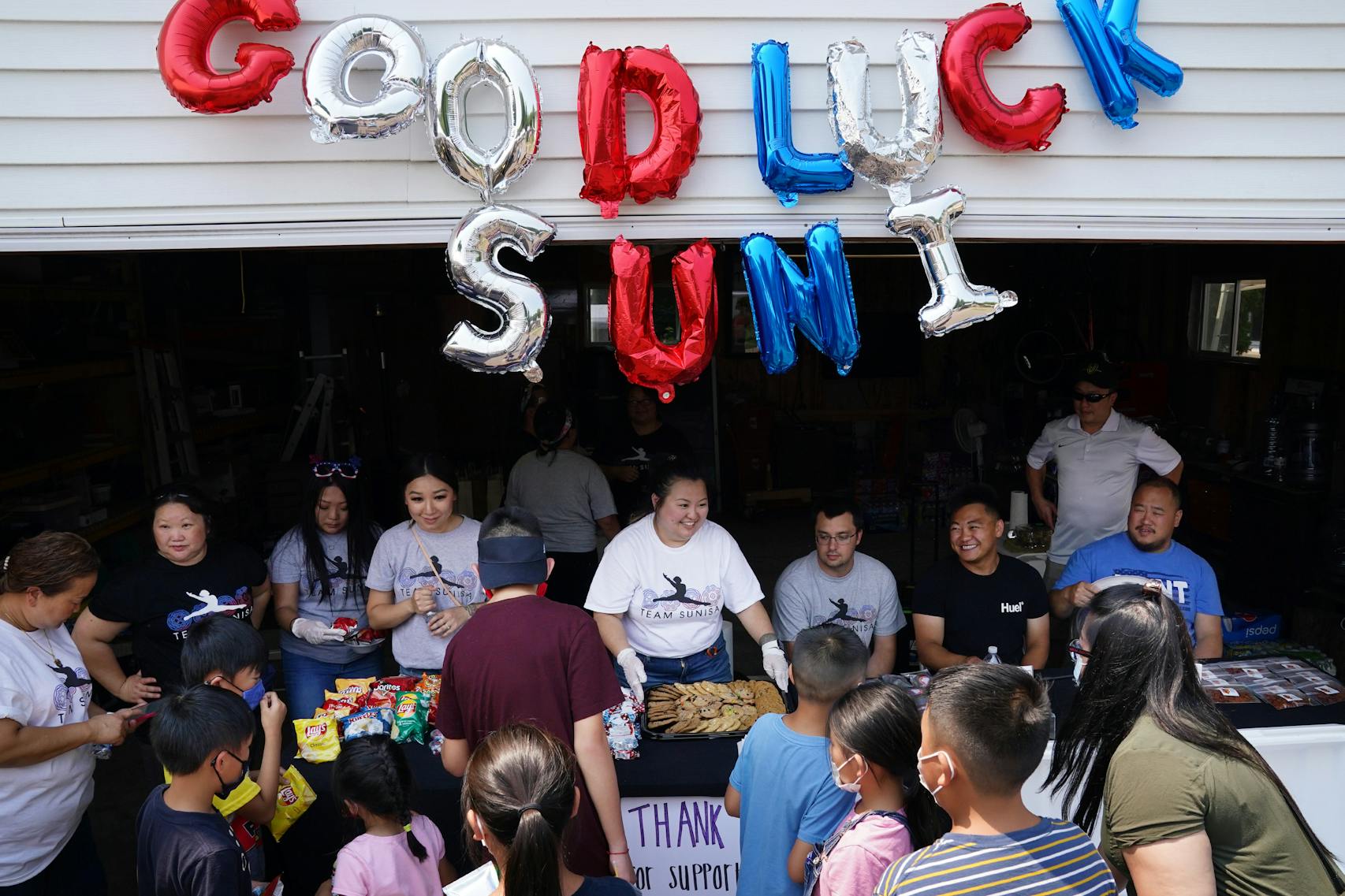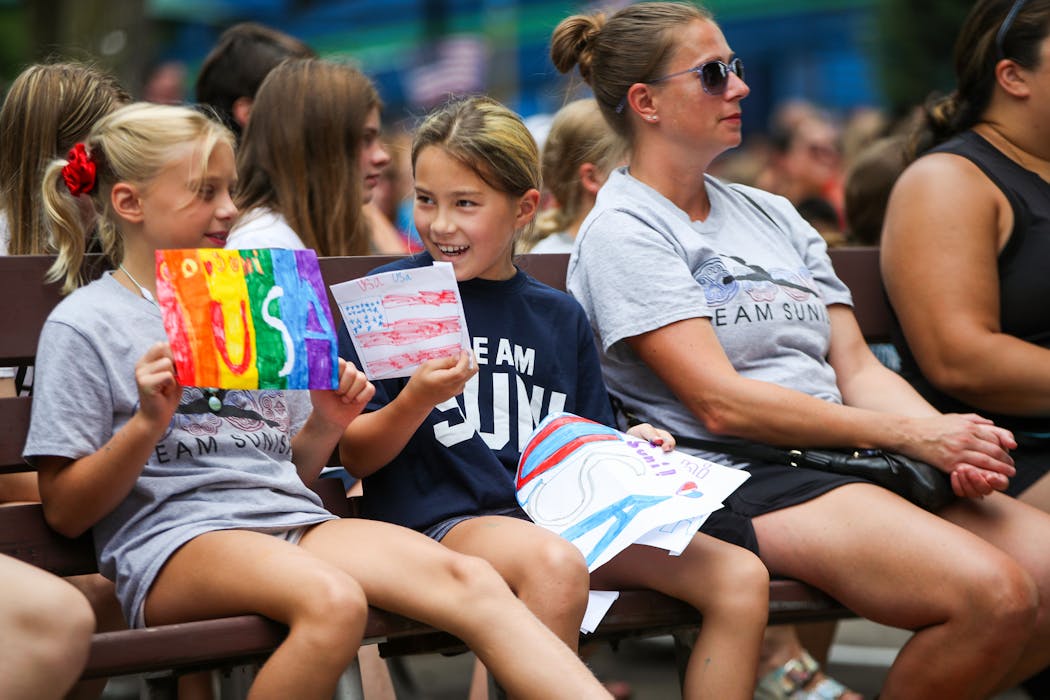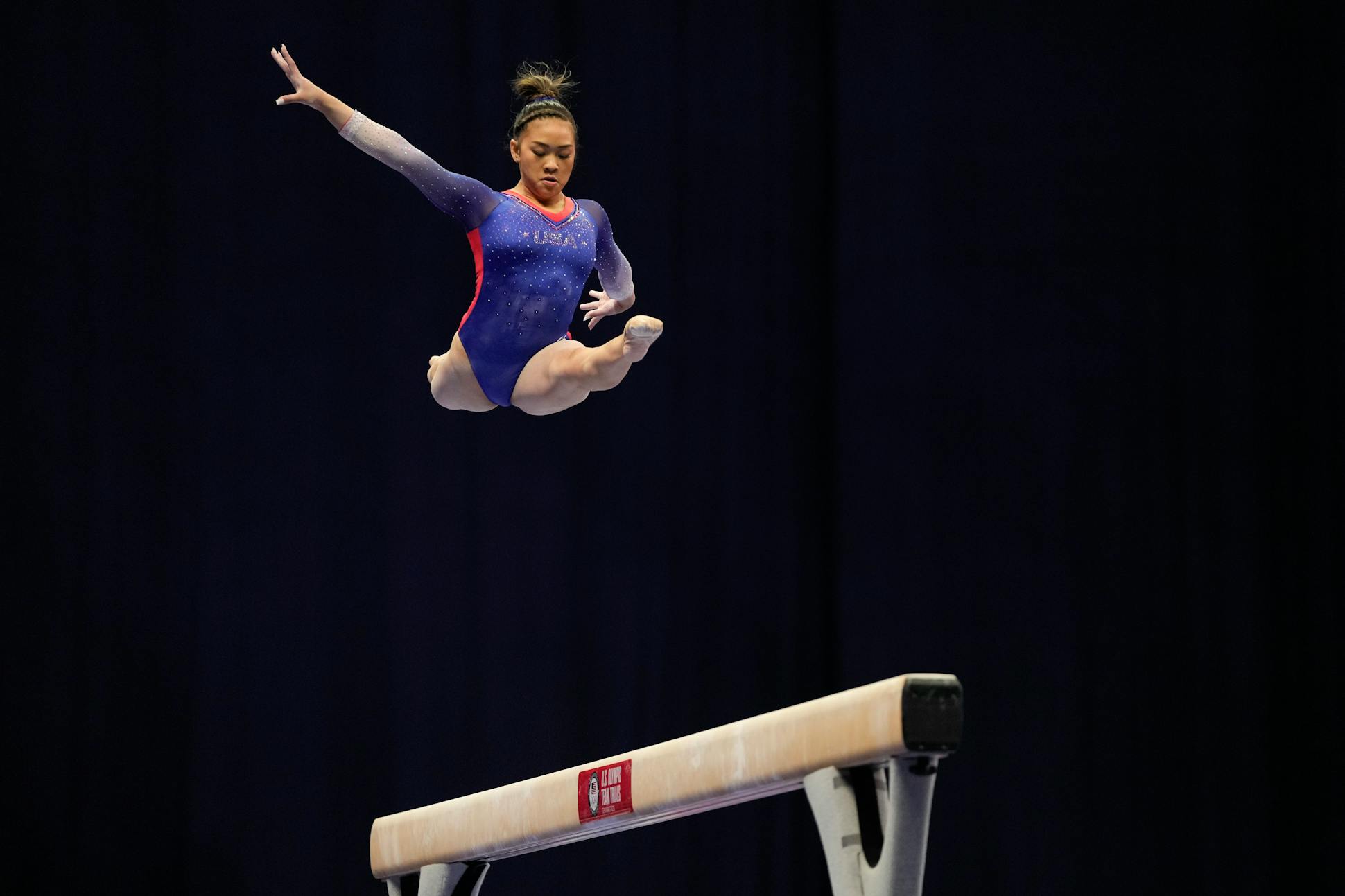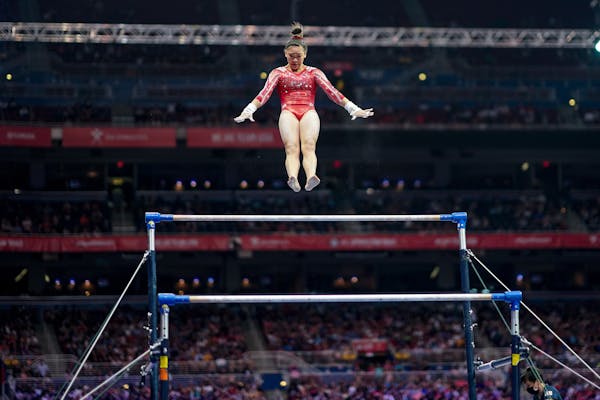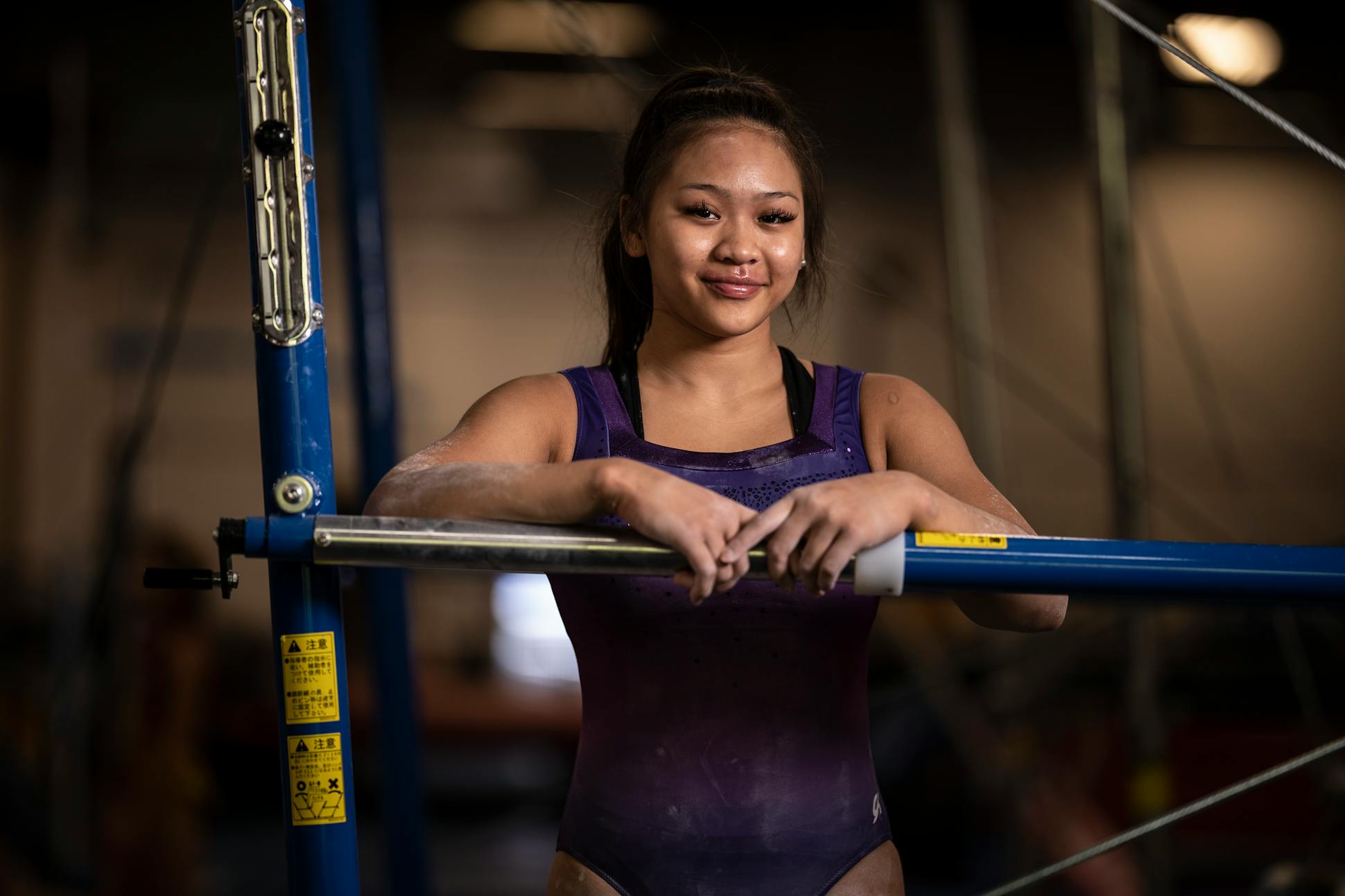In the Hmong culture, a khi tes is a ritual of celebration. When someone reaches a joyous milestone, family and friends tie white string around that person's wrists, while offering blessings, congratulations and good wishes.
Suni Lee couldn't gather with her large extended family after she made the U.S. Olympic team, so the khi tes took a slightly different form. With the Tokyo Olympics only three weeks away — and COVID-19 concerns still looming — the St. Paul gymnast had to avoid crowds. At the party in her backyard on July 3, her relatives tied the white string to little cards, inviting guests to write wishes for Lee to read later.
By midafternoon, dozens of cards hung on a strand of twine next to the Lees' garage. "The whole Hmong community is so proud of her,'' said Judy Yang, one of Lee's aunts. "My mom told me they're even talking about her on the radio overseas. It's a great thing.''
The first Hmong-American to make the U.S. Olympic team, Lee, 18, enters the Tokyo Games as an ascending star. She is one of the world's best performers on uneven bars and could bring multiple medals back to the Twin Cities, home to the country's largest population of Hmong-Americans.
Within her community, Lee is viewed as an ambassador and role model. As an Olympian, she represents the dreams the Hmong carried with them starting in the late 1970s, when many sought refuge in the U.S. after the Vietnam War.
The Hmong fought alongside American forces in Laos and paid a heavy price. Tens of thousands were killed in the war or died at the hands of the Lao government after the U.S. withdrew. Suni's parents, Houa John Lee and Yeev Thoj, were youngsters when their families fled the country, making the dangerous trek across the Mekong River to refugee camps in Thailand.
"When the U.S. pulled out of Laos, the war wasn't over,'' John Lee said. "People had to go to Thailand for their safety, and for a chance to have a better life.''
The Lees found theirs in Minnesota, where about 80,000 Hmong now live. Suni, whose first Olympic competition begins at 1:10 a.m. Sunday morning, said she has been overwhelmed by messages of support, encouragement and pride from a community she is eager to represent on the world stage.
At her send-off party, red, white and blue streamers and balloons hung from the fence and garage, next to the khi tes cards. Lee Pao Xiong, director of the Center for Hmong Studies at Concordia University (St. Paul), said Suni's place on the Olympic team will "tell the Hmong story to the world'' while emphasizing the roots they have established in this country.
With some 300,000 Hmong now living in the United States, she's going to have quite a fan base.
"The Hmong here are very proud to be American,'' said Sia Lo, a St. Paul attorney and part of Lee's extended family. "We hope all of America is proud of Suni. What she's achieved showcases what is possible here in the United States.''
Team Sunisa
The party on July 3 drew a steady crowd to the Lees' home, on a shady street on the east side of St. Paul. Suni's older brother Jonah sold "Team Sunisa'' T-shirts — designed by several family members — under a canopy. A big-screen TV displayed photos of Suni in action, as little brother Noah, 4, danced in the driveway.
Aunts, uncles, cousins and in-laws arrived early to prepare food, set up tables and decorate the garage with balloons that read "Good Luck Suni.'' Yang noted that John Lee is one of 11 siblings, and there are more than 100 relatives on his side of the family alone.
"We are a family culture,'' said Kou Ly, a cousin of John Lee. "We celebrate together, and we mourn together. Every time we have a party, it has to be in a big place.''
Cecelia Lee, John's youngest sister, said it was "a little bit surreal'' to think her niece would be competing at the Olympics. She recalled watching a much younger Suni in the same backyard, swinging from the metal bars holding the clotheslines and practicing on a wooden balance beam crafted by her dad.
Suni would tumble and flip inside the house, too, leading her parents to seek an outlet for her energy. They put her into gymnastics classes when she was 6 years old, at Midwest Gymnastics Center in Little Canada. A dozen years later, Lee is still there, training with coaches and gym owners Jess Graba and Alison Lim.
The youngest of the four women on the U.S. team for Tokyo, Lee graduated from South St. Paul High School last month. In a happy bit of timing, she was able to participate in the ceremony, which fell between the U.S. championships and Olympic trials. That was especially meaningful for a young woman who gave up many typical teenage pursuits to devote herself to gymnastics.
"She was a very active kid, always tumbling around,'' Cecelia Lee said. "But who would have known it would lead to this?''
The lively Lee and Thoj families have been a constant source of support for each other, in good times and hard ones. All 10 of John Lee's siblings live in the Twin Cities, and their legendary summer reunions attract as many as 300 relatives. Thoj's smaller family also is nearby.
John, an applications engineer, and Yeev, an associate care manager with a health insurer, said those family ties were essential to financing their daughter's Olympic dreams. Their relatives helped put on yearly fundraisers and donated money. The extended family also stepped up to assist after John was partially paralyzed in a 2019 tree-trimming accident.
The Lee family came to the U.S. in 1979, escaping the violence in Laos when John was only 8 years old. The Hmong had been recruited by the U.S. to fight Communist forces during the Vietnam War and suffered massive casualties among both troops and civilians, as villages were bombed and crops were burned. According to the Minnesota Historical Society, about 50,000 Hmong civilians were killed in the war, and an estimated 25% of Hmong men and boys died in combat.
Following the withdrawal of U.S. forces, the Lao government declared the Hmong enemies of the state because of their alliance with the Americans.
"If you were involved with the Americans or the French, you were in trouble,'' said Kou Ly, who came to the U.S. when he was 24. "We had to flee. Our people, who had lived in the highest mountains in Laos, were concentrated in refugee camps.''
Thailand did not allow Hmong to settle there, so people lived in the crowded camps — three or four families to a tent, Ly recalled, in sleeping bags — for as long as it took to gain entry to the U.S., Canada, France or Australia.
Suni said her parents and grandparents don't talk much about the hardships they faced. Her generation is well aware of the courage it took to get their families out of Laos and start over in an unfamiliar new place, something that makes her all the prouder to represent them.
"We know they did it for a reason, so they could be safe and their kids could have a good life,'' she said. "It's something very cool for my generation to know they did that for us. And it was all worth it.''
A champion and trailblazer
Suni enjoys camping and fishing, is a fan of Harry Potter books and cherishes time with her family. Her dad gives her a pep talk before every competition, either in person or via FaceTime. His words keep her calm and focused, she said, though her mother can't bear to watch.
"I get so nervous,'' Thoj said. "My heart beats so fast. At the Olympic trials, she did so well, I was in tears every time she finished an event.''
In 2019, during Lee's first season at the senior elite level, she finished second in the all-around at the U.S. championships — behind only Simone Biles — and won the national title on bars. She gained wider fame at that year's world championships, winning a team gold, a silver on floor exercise and bronze on bars.
Xiong said media in China, Thailand, Laos and Japan have written about Lee, and Facebook posts about her have gone global.
"There are still people who don't know who (the Hmong) are, even in Minnesota,'' Xiong said. "Now they're learning about us. Suni is our ambassador to the world.''
During the party in their backyard, Lee's parents greeted a constant stream of people wanting to wish their daughter well. "People we don't know are reaching out, too,'' Thoj said. "They're telling us how joyful they are to see her do well. It's very surprising and very nice.''
In addition to bringing more visibility to the Hmong community, Xiong believes Lee can change traditional Hmong attitudes about sports and extracurricular activities. Xiong said his parents' generation was focused solely on education, viewing sports, music and other pursuits as "just play'' that took time away from study.
The Lees were trailblazers of a sort. Though John and Yeev were busy with their jobs and raising six children, they drove Suni to countless practices and competitions, committed to helping her succeed. That paid off in many ways, including an athletic scholarship to Auburn.
"It's good for kids to see what is possible,'' aunt Judy Yang said. "And it's good for the parents to understand how their children can benefit from sports. Suni is showing the way.''
John Lee said the younger generation is taking note. He expects many more Hmong parents to support their kids' sporting dreams, a change Suni's coach already is noticing. Before the 2019 world championships, Graba didn't see Hmong kids in local gyms. "Now, we do,'' he said. "There's definitely a change.''
With COVID-19 still spreading in Japan, Olympic organizers have banned spectators from abroad. Though Lee's family won't be able to attend the Summer Games, they will be there in spirit. Shortly after the Olympic trials, Yang and Cecelia Lee already were thinking about plans for an early-morning viewing party.
The pandemic also forced the Lee family to put off a trip to Laos. Suni had looked forward to learning more about what her relatives' life was like before they came to the U.S., to settle in a place where anything seemed possible.
She still hopes to get there one day. In the meantime, she wants to write the next chapter of the Hmong-American story.
"I hope I can inspire people,'' she said. "Being the first Hmong-American to make the Olympics is a really big deal. I'm so excited to represent the Hmong community.''
